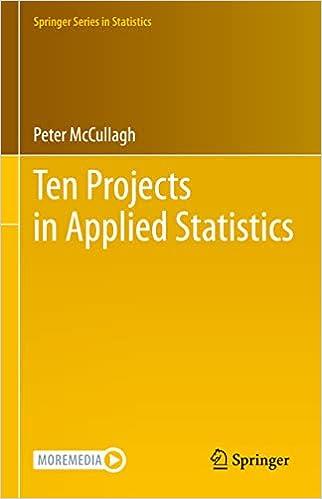Welham and Thompson (1997) discuss two possibilities for a Gaussian likelihood-ratio statistic. For arbitrary mean vector (mu),
Question:
Welham and Thompson (1997) discuss two possibilities for a Gaussian likelihood-ratio statistic. For arbitrary mean vector \(\mu\), inner product matrix \(W=\) \(\Sigma^{-1}\), and \(W\)-orthogonal projection \(Q\) with \(\operatorname{kernel} \mathcal{K}=\operatorname{span}(K)\), W\&T define the residual \(\log\) likelihood as a function of the parameter \(\theta=(\mu, \Sigma)\) by
\[
2 \mathrm{RL}(y, \mathcal{K} ; \theta)=c(K)+\log |W|-\log \left|K^{\prime} W Kight|-\|Q(y-\mu)\|^{2}
\]
where \(c(K)=\operatorname{rank}(Q) \log (2 \pi)-\log \left|K^{\prime} Kight|\). Note that \(Q\) depends on \(\Sigma\), and \(Q \mu\) need not be zero. For nested subspaces \(\mathcal{X}_{0} \subset \mathcal{X}_{1}\), show that version \(A\) in their equation (5) is the difference
\[
2 \operatorname{RL}\left(y, \mathcal{X}_{0} ; \hat{\theta}_{1}ight)-2 \operatorname{RL}\left(y ; \mathcal{X}_{0} ; \hat{\theta}_{0}ight)
\]
where RL attains its maximum at \(\hat{\theta}_{0}\) under the null, and at \(\hat{\theta}_{1}\) under the alternative.
Discuss whether version \(D\) in their equation (6) is or is not a likelihood ratio. If it is a likelihood ratio, or a non-random multiple of a likelihood ratio, what is the event for which the probability ratio is computed?
Step by Step Answer:






